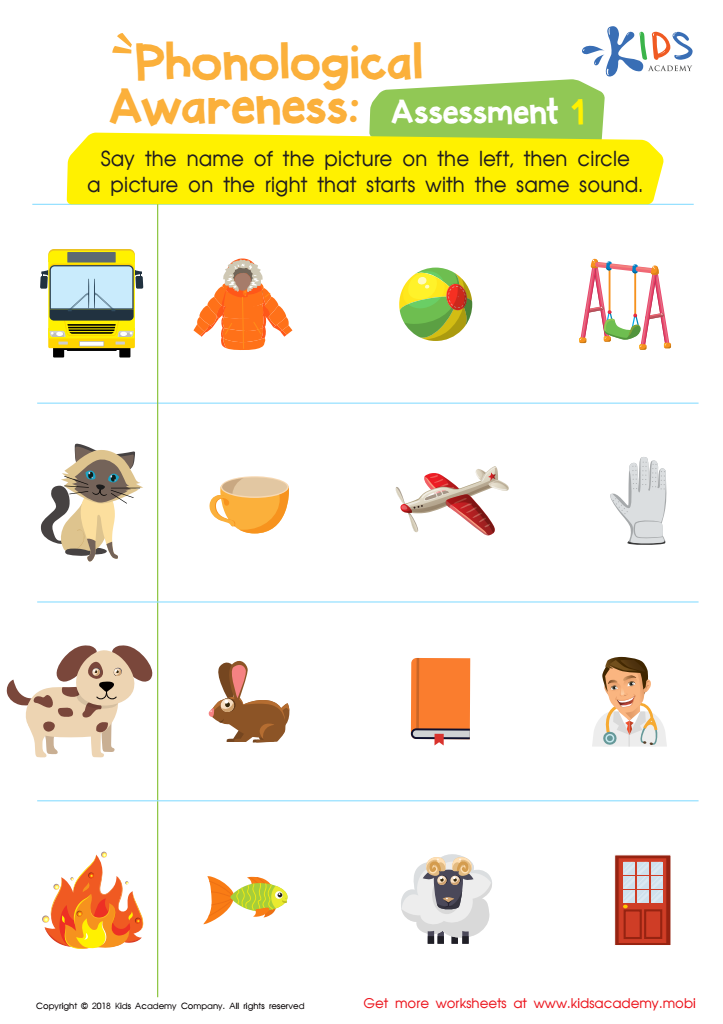Letter recognition Normal Elementary Phonics Worksheets for Ages 3-7
3 filtered results
-
From - To
Welcome to our Letter Recognition Normal Elementary Phonics Worksheets, specially designed for young learners aged 3-7! These engaging worksheets aim to build essential literacy skills by helping children identify and recognize letters in a fun and interactive way. With a variety of activities, including tracing, coloring, and matching, kids will explore the alphabet while enhancing their phonemic awareness. Perfect for teachers and parents alike, our resources provide an enjoyable learning experience that prepares early readers for future reading success. Encourage your child's love for letters and enrich their phonics journey with our expertly crafted worksheets today!


Long and Short U Worksheet


Long and Short E Worksheet


Phonological Awareness: Assessment 1 Worksheet
Letter recognition is a fundamental skill that lays the groundwork for literacy and cognitive development in children ages 3-7. Understanding the alphabet is crucial as it equips young learners with the ability to decode words and ultimately read independently. Normal Elementary Phonics programs focus on systematic instruction that helps children identify letters, their sounds, and how they connect to form words.
Parents and teachers should prioritize letter recognition because it enhances a child's confidence and motivation to read. When children can recognize letters and associate them with sounds, they are more likely to engage with books, fostering a love for reading that can last a lifetime. Furthermore, strong letter recognition skills correlate with better writing abilities, aiding in communication development.
In addition to academic advantages, letter recognition supports overall brain development, enhancing memory and cognitive skills. Engaging with phonics at an early age prepares children for success in more advanced literacy skills in the future. Ultimately, nurturing this foundational skill allows parents and teachers to equip children with tools that will benefit many aspects of their lives, both academically and personally. Supporting letter recognition can set the stage for a lifelong journey of learning and curiosity.
 Assign to My Students
Assign to My Students









